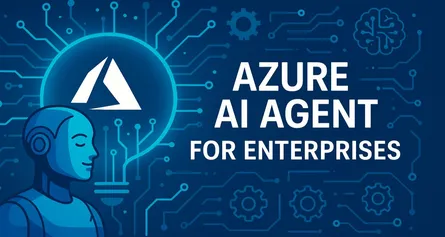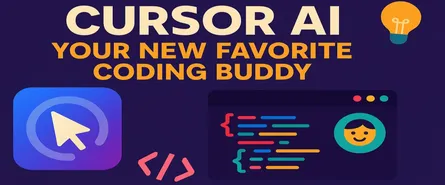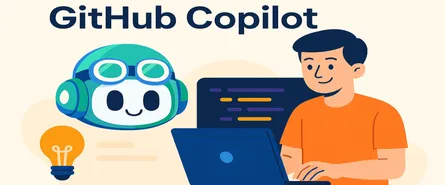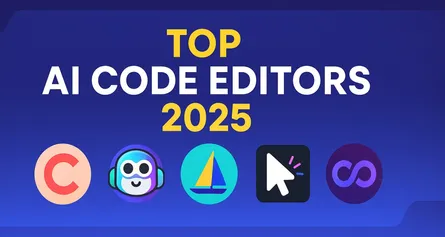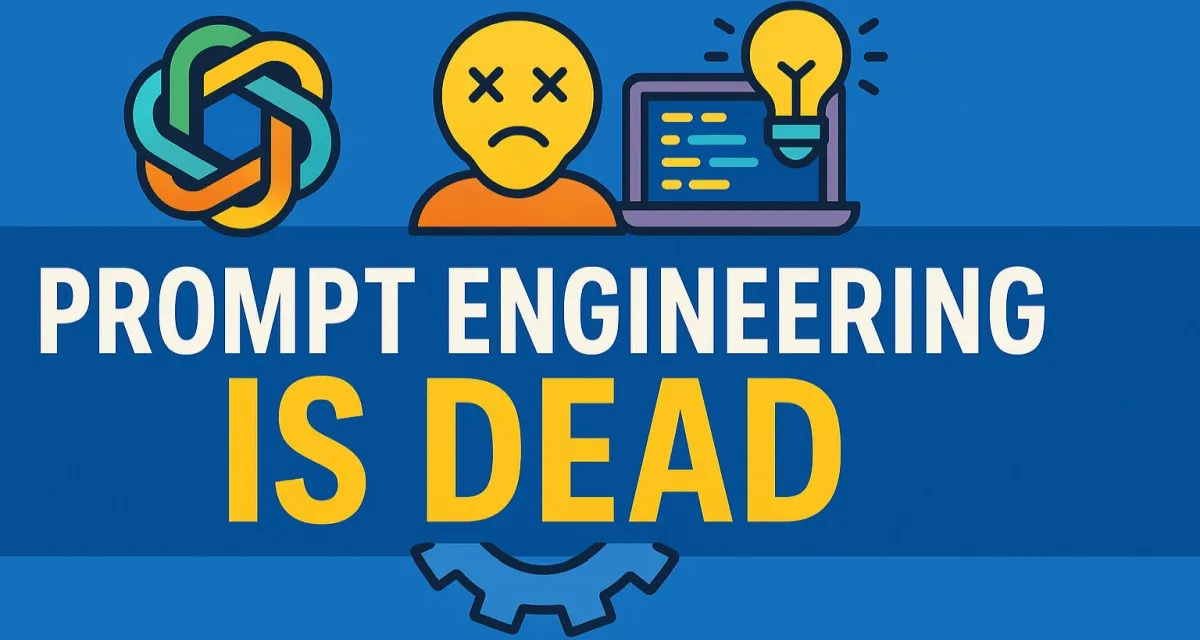
Prompt Engineering Is Obsolete: The Shift Towards Intuitive AI Interactions
Artificial intelligence has transformed rapidly, reshaping not just how we work but also how we communicate with technology. If you’re involved with AI or have been following its developments closely, you’ve likely noticed a significant shift: the kind of detailed prompt engineering that was once considered an essential skill for everyday users is quickly becoming less critical.
But why is this happening? How did meticulous prompt engineering rise to prominence, and why is its necessity now declining for the average user? Let’s take a deeper look into how AI interactions have evolved and why we increasingly no longer need specialized prompt crafting to achieve optimal results in many common scenarios.
The Evolution of AI Interfaces: From Text Prompts to Natural Interactions
Think back to the early days of mainstream AI assistants—Siri, Alexa, and Google Assistant. You spoke to them, and they responded, but often rigidly. Their responses were limited, and they frequently required precise wording to understand your requests. This wasn’t natural conversation; it felt more like entering commands into a computer terminal, except with your voice.
Today, AI has dramatically evolved. Interaction is no longer solely about typing perfect prompts or commands for many applications. Instead, AI interfaces are becoming increasingly conversational, intuitive, and user-friendly. Platforms such as the latest iterations of ChatGPT (like GPT-4o and beyond), Google’s Gemini models, and Anthropic’s Claude series now understand context more deeply, interpret vague instructions with greater accuracy, and ask clarifying questions—much like a human assistant would. These newer systems are shifting away from purely mechanical text inputs towards more versatile interfaces, including sophisticated voice conversations, visual inputs, and even gesture recognition.
Imagine trying to teach someone how to ride a bicycle. You don’t provide them with precise, multi-page written instructions on every micro-movement. Instead, you show them, talk to them, and adapt based on how they respond. Similarly, AI is now learning to interact more intuitively, reducing the need for users to learn complex, structured text prompting for many tasks. This transition towards natural interaction methods is making the highly specialized skill of prompt engineering increasingly redundant for a broad user base.
Ask yourself: would you prefer giving detailed, formulaic commands to your AI assistant every time, or would you rather have a natural conversation?
The Rise and Evolving Role of Prompt Engineering
Prompt engineering exploded in popularity around 2022 and 2023, largely fueled by the growth of models like GPT-3 and early versions of ChatGPT. At that time, crafting precise prompts was often essential. Specialists became adept at phrasing requests in particular ways, adding context, examples, or specific instructions to guide the AI. Companies even hired “prompt engineers,” paying lucrative salaries for expertise in prompting AI to produce optimal outputs.
Prompt engineers were like skilled mechanics carefully tuning engines to squeeze out maximum performance. They understood nuances, optimizing phrasing to overcome limitations in the AI’s understanding. It became a competitive advantage; businesses that mastered prompt engineering often reaped better results from AI systems.
But why is this specialized skill now becoming less critical for the average user?
Simply put, AI systems have grown exponentially smarter and more intuitive. They’re designed to understand user intent with less need for meticulously structured prompts. The intense focus on manual prompt engineering for general use is declining because the technology has evolved past the stage of needing constant, granular fine-tuning from the end-user for common tasks. Instead of specialized instructions, modern AIs focus on context, intent, and continuous learning—making the elaborate art of intricate prompt crafting unnecessary for a growing number of applications. While advanced users and developers working on complex, novel, or highly specific AI applications will still benefit from understanding how to structure inputs effectively (sometimes called “prompt design” or “instruction fine-tuning” at a higher level), the need for the average person to learn “prompt engineering” as a distinct skill is fading.
Consider SEO—once upon a time, keywords had to be stuffed meticulously into articles. Today, natural language and high-quality content rank higher because search engines better understand intent. Basic prompt engineering is following a similar trajectory for mainstream users.
From Manual Prompting to Automated and Simplified Systems
Remember when cameras required manual focus? Photographers spent considerable effort adjusting lenses for clarity. Now, autofocus handles the task automatically and often superbly. AI prompting is following a similar trajectory. Initially, prompts needed precise manual adjustments. Now, automation, more intelligent systems, and interfaces that abstract away the complexity of prompting manage those intricacies more effortlessly.
Current AI systems, like advanced agents, integrated AI features in software, and custom GPTs or similar configurable AI tools, often automatically optimize or generate effective prompts behind the scenes, or they allow users to define goals in simpler, higher-level terms without human input for the underlying prompt structure. They learn from past interactions and user feedback to refine their performance continuously. These AI agents and smarter interfaces can automatically detect patterns, adjust their internal processes, and deliver consistently high-quality outputs. Manual, detailed prompt adjustments by everyday users are becoming less critical.
For instance, tools that allow for task automation and chaining, often built upon models like those from OpenAI, Google, or Anthropic, now handle complex tasks with simpler initial instructions, leveraging automated loops of self-generated instructions or refined queries. These tools continuously self-correct and refine their tasks, freeing users from the burden of engineering every step of the prompt.
Think of it like driving a car equipped with adaptive cruise control and lane assist. You don’t constantly press or adjust the accelerator or micromanage steering. Instead, the car automatically adjusts its speed and position based on traffic and road conditions. Similarly, more intuitive and automated AI prompting frees you from constant manual tuning, allowing you to focus on your overarching goals.
The Democratization of AI Access
Intricate prompt engineering once acted as a barrier. You had to learn precise prompting techniques to effectively use AI tools, which could keep them out of reach for everyday users. However, AI democratization—the increasing ease with which anyone can access and effectively use these tools—is changing this dramatically.
Modern AI models like GPT-4o, the latest Gemini family, and Claude 3.5 now comprehend natural language so well that even casual users achieve great results without special training for a wide array of tasks. Whether you’re a marketer creating campaign ideas, a programmer debugging code, or a student researching topics, you increasingly no longer need specialized prompt engineering skills to communicate effectively with AI.
Democratization has made AI universally accessible. It’s like using a smartphone camera: you don’t need to be a professional photographer to take great photos anymore, as intelligent software handles adjustments for you automatically. Similarly, AI now adjusts to your conversational style and intent without necessarily needing elaborately engineered prompts from the user.
This shift has profound implications. The need for widespread prompt engineering previously represented a knowledge gap. Now, anyone can effectively harness AI simply by communicating more naturally. This accessibility is fundamentally reshaping who can leverage AI’s power and what they can achieve with it.
Self-Improving AI Systems: Less Prompt Engineering Required from Users
One of the most compelling reasons behind the declining need for user-driven prompt engineering is the rise of self-improving and more adaptable AI. These systems automatically refine their understanding and outputs by learning continuously from vast datasets and ongoing interactions. Humans no longer need to guide them with such explicit, detailed prompt structures for many common use cases.
Self-improving AI learns dynamically, adjusting internal parameters and outputs based on ongoing user feedback and new data. For instance, if an AI-generated answer isn’t quite right, modern systems can adapt from corrective feedback or learn from aggregated interaction patterns, refining their understanding of user needs without requiring users to re-engineer their original prompts constantly.
Let’s take an analogy from sports coaching. Traditionally, coaches gave extremely detailed instructions to players for every scenario. But modern coaching also emphasizes empowering players to learn and adjust in real-time, guided by their own experiences and a strong understanding of principles. Likewise, AI now learns to refine its responses more automatically, minimizing the need for granular human input in the prompt itself.
Self-improvement and better generalization capabilities are increasingly standard in advanced AI models. Systems like those from OpenAI, Google, and Anthropic regularly update their internal “thinking” processes based on vast user interaction data and new training methods. This continuous, automated refinement means you no longer need meticulously structured prompts to achieve high-quality outputs in many situations. The AI itself is becoming a better interpreter of natural human language and intent.
Case Studies of Intuitive AI Systems: Real-World Successes Without Complex Engineered Prompts for Users
The shift away from specialized prompt engineering for the end-user isn’t just theoretical—it’s already reshaping real-world applications. Companies and platforms now thrive by leveraging conversational AI, demonstrating that intricately engineered prompts by the user are no longer always critical.
Customer Support: Shopify’s AI-Powered Assistant (and similar platforms)
Shopify integrated an AI-driven conversational assistant that significantly reduced the need for support agents or customers to manually engineer prompts to retrieve accurate responses. The system intuitively understands customer queries through natural language. For example, customers can ask, “Why didn’t my order ship yet?” or “Help me update payment details,” and the assistant accurately understands and responds effectively, without a predefined user-facing prompt structure. Many e-commerce and service platforms are adopting similar AI that relies on understanding natural queries.
This success story reflects broader adoption across industries. AI no longer relies solely on rigid scripting from the user. Instead, it listens, adapts, and responds more naturally—much like an experienced human agent would.
Healthcare: AI Symptom Checkers and Virtual Assistants
Several AI-driven diagnostic aids and virtual health assistants offer consultations where patients describe symptoms conversationally, without having to phrase concerns in a specific, structured format. The AI is designed to understand natural language descriptions of symptoms, ask pertinent follow-up questions, and recommend possible next steps.
Imagine explaining symptoms to a doctor—you wouldn’t prepare detailed, formulaic prompts beforehand. Similarly, these AI tools aim to understand nuanced health queries conversationally, reducing the reliance on the user to engineer perfect instructions. This conversational interface makes healthcare information more accessible and intuitive.
Virtual Coaching & Education: Duolingo’s Language Learning Assistant (and other EdTech tools)
Language learning app Duolingo, with features like Duolingo Max powered by advanced GPT technology, offers a conversational tutor. Instead of prompting the AI with rigidly structured sentences, users converse naturally. Learners speak or type questions like, “How do I politely ask for the check in French?” and the AI responds fluidly, even providing nuanced cultural context. Many educational AI tools are moving in this direction, focusing on natural interaction.
These conversational systems showcase how AI achieves greater clarity and value when users are freed from the need for rigidly engineered prompts. They illustrate how conversational interfaces deliver smoother, more human-like interactions, significantly improving user experience.
The ‘Chain of Thought’ Revolution and Improved Reasoning: Intrinsic Capabilities Without Explicit User Instructions
One of the pivotal developments reducing the need for explicit, step-by-step user prompts is the enhanced reasoning capability of modern AI, including “chain of thought” (CoT) processing and similar techniques. Previously, to guide an AI through complex problems, users often had to meticulously craft prompts that broke tasks into smaller steps. Modern AI models, however, can now more intrinsically reason step-by-step or break down complex queries without such explicit prompting from the user, profoundly changing how we interact with them.
Understanding Enhanced AI Reasoning
Concepts like “chain of thought” refer to the AI’s ability to internally (and sometimes explicitly, if asked) break down complex tasks into logical sequences, often without detailed human guidance on how to perform each step. This mirrors human problem-solving—when you’re faced with a complex math problem, you naturally break it down into manageable steps without someone explicitly instructing you to “first do X, then do Y.”
For instance, consider an AI tasked with diagnosing why website traffic suddenly dropped. Previously, you might have needed to explicitly prompt with a detailed multi-step plan. Now, a modern AI can often take a higher-level query like “Analyze why my website traffic dropped last week and suggest remedies” and autonomously carry out analytical steps, determining a logical sequence internally and producing a comprehensive report without needing the user to prompt each part of the chain explicitly.
Real-world Implementation: Financial AI Advisors and Data Analysis Tools
Financial institutions and business analytics platforms use AI that can intrinsically apply sophisticated reasoning to offer investment advice or analyze datasets. AI assistants can analyze market conditions, historical trends, and client preferences more autonomously. When providing recommendations, these systems can often outline their logical reasoning steps if asked, without the user having prompted them to “think step by step” in the initial query.
These AI systems inherently understand the importance of structured reasoning for many tasks, thereby significantly reducing human effort in planning and articulating every detail in a prompt. It’s becoming more like having an experienced analyst who can understand a broad request and then apply their expertise.
Multimodal Interaction: Voice, Image, Code, and Beyond
AI interactions are moving well beyond text. Multimodal interactions—using voice, images, videos, code generation/analysis, and even gestures—are becoming increasingly common and sophisticated, making the concept of traditional text-based prompt engineering less central for many use cases.
Voice Interaction: Advanced Assistants
Voice assistants like those from Amazon, Google, Apple, and integrated into various apps now interpret complex, conversational speech more effortlessly than ever. Users ask questions in natural conversational ways: “What’s the quickest way downtown considering the current traffic?” or “Draft an email to my team summarizing our meeting and outlining next steps.” The AI interprets context, intent, and nuances more effectively, responding naturally without predefined textual prompts from the user.
Think about how you’d ask a colleague for help—you wouldn’t write out a perfectly phrased, optimized text request beforehand. Voice interfaces increasingly reflect this natural, spontaneous interaction style.
Image Recognition and Generation: Tools like Google Lens and integrated features in models like GPT-4o and Gemini
Image-based interactions are similarly powerful. With tools like Google Lens, users can photograph a plant and ask directly, “What is this plant, and how do I care for it?” AI models can now accept images as input for analysis, modification, or to inspire generation. You can upload a sketch and ask the AI to turn it into a photorealistic image or a website layout. The AI recognizes the visual input, understands the natural language request related to it, and responds accordingly. Often, no complex text prompt is needed—the visual context combined with simple language triggers accurate responses.
Gesture and Motion Inputs: Emerging AR/VR Systems
Emerging technologies such as Meta’s augmented reality (AR) platforms and other spatial computing systems are moving beyond voice and images. They are designed to recognize gestures and motions intuitively, letting users interact without extensive spoken or written commands. For example, AR glasses might interpret hand gestures to navigate menus, zoom into visual elements, or even translate foreign signs instantly.
Multimodal interactions make AI interfaces profoundly intuitive. Like interacting with a good friend who understands subtle gestures or body language, these AI systems effortlessly interpret various input types. This natural interaction reduces the need for users to become experts in engineering text prompts.
Technical Limitations That Made Widespread Prompt Engineering a Temporary Phase
Meticulous prompt engineering for the masses was, in many ways, a temporary solution—a useful stopgap that arose from the limitations of earlier AI models rather than being an optimal long-term approach for user interaction. Why was it ultimately limited as a universal skill?
Rigid Structure
The primary limitation was the rigidity that early models often demanded from prompt structures. Engineered prompts required precision. Minor deviations could lead to significant misunderstandings by the AI. Imagine asking for directions but needing to phrase your question exactly right every time—frustrating and unnatural. Early prompt engineering suffered from a similar problem.
Context Dependency and Memory
Another technical drawback was the poorer handling of nuanced or extended context by older models. Engineered prompts often struggled to maintain context across long interactions. Each new related task might require carefully re-engineered instructions. Modern AI, conversely, excels at maintaining conversational context and remembering earlier parts of discussions more naturally and over longer interactions.
Scalability Issues for Users
Widespread reliance on users to become prompt engineers faced scalability challenges. Expecting everyone to craft and maintain complex prompts required considerable effort, limiting how rapidly organizations or individuals could effectively scale their use of AI applications. As AI tasks grow more complex, the burden of managing intricate prompt libraries by end-users becomes unsustainable and inefficient.
These limitations made it clear: the need for every user to be a prompt engineer was always likely to be temporary. It was like needing to understand the intricate workings of an engine just to drive a car—useful for mechanics, but not ideal for the everyday driver.
The Future of Human-AI Collaboration: Beyond Meticulous Prompt Engineering
With the need for detailed prompt engineering by the average user declining, what’s next for human-AI collaboration? What role do humans play if AI systems no longer require such explicit, formulaic instruction for many tasks?
Humans as Strategists, Curators, and Validators
Humans will increasingly shift towards strategic roles—guiding high-level objectives, defining ethical considerations, and critically evaluating AI outputs, rather than micro-managing AI interactions through prompts. Think of yourself less as a detailed prompt engineer and more as a strategic partner, focusing on defining overall goals, interpreting AI outputs with discernment, and ensuring responsible and effective use. The ability to ask good questions and critically assess answers remains paramount.
Enhancing AI Trust, Explainability, and Refinement
As AI interactions become more intuitive, humans must ensure transparency and trust. Your role shifts toward verifying AI outputs, pushing for better explainability when needed, and building trust by understanding and communicating the basis of AI decisions or creations. Human oversight is crucial to ensure that AI remains accountable, aligned with human values, and that its outputs are refined for quality and accuracy.
Creative Collaboration, Innovation, and Complex Problem Solving
Humans will thrive in collaborative roles, providing creativity, emotional intelligence, complex critical thinking, and nuanced judgments that AI, while powerful, still complements rather than fully replaces. Collaboration moves beyond managing prompts toward genuine co-creation. Humans define novel objectives, refine creative concepts, and leverage AI as a powerful partner in innovation—combining human ingenuity with AI’s analytical and generative capabilities. For developers and researchers, advanced prompt design and system-level instruction will continue to be important for pushing the boundaries of AI.
Consider the future like a sophisticated orchestra—AI provides powerful instrumentation and can follow complex scores, while humans act as conductors, composers, and discerning audience members, guiding the performance and ensuring its artistic and ethical merit.
Final Reflection: Embracing a More Intuitive AI Future
Detailed, manual prompt engineering served an essential purpose in the early stages of accessible generative AI, but its necessity for the average user is inevitably and beneficially declining. Moving beyond the need for most people to learn complex engineered prompts signals a maturation in AI systems. AI increasingly understands, adapts, and evolves more naturally with simpler, more conversational instructions.
The future isn’t primarily about mastering detailed instructions for AI; it’s about clear communication, strategic insights, critical evaluation, and creative synergy. The need for specialized prompt engineering skills for everyday tasks isn’t just fading—it’s being replaced by richer, more intuitive interactions that empower everyone.
So, ask yourself: Are you prepared to embrace this more intuitive, collaborative AI future?
Tags
Share this article
Help others discover this content
About Sudhir mangla
Content creator and writer passionate about sharing knowledge and insights.
View all articles by Sudhir mangla →